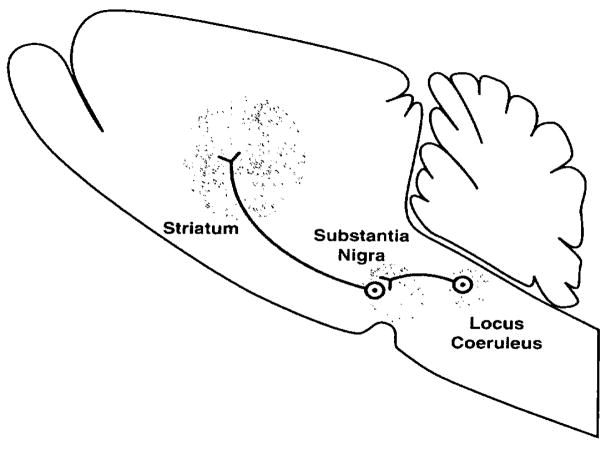Figure 2.
Early neurocircuitry diagram of drug reward for opiates (Wise, 1980). “Suggested sites of potential interaction of opiates with brain reward circuitry. Opiate receptor fields are shaded in the region of the striatal dopamine terminal field, the tegmental dopamine cell region, and the region of the locus coeruleus, which is thought to inhibit reward circuitry, perhaps by an inhibitory synapse on the dopamine cells themselves. Opiates inhibit locus coeruleus firing; their actions in the tegmentum and striatum are not yet understood, and may be either pre- or post-synaptic in either region. Thus, opiates may act on, or either afferent or efferent to, the dopamine cells implicated in reward function.” [Taken with permission from Wise, 1980.]

